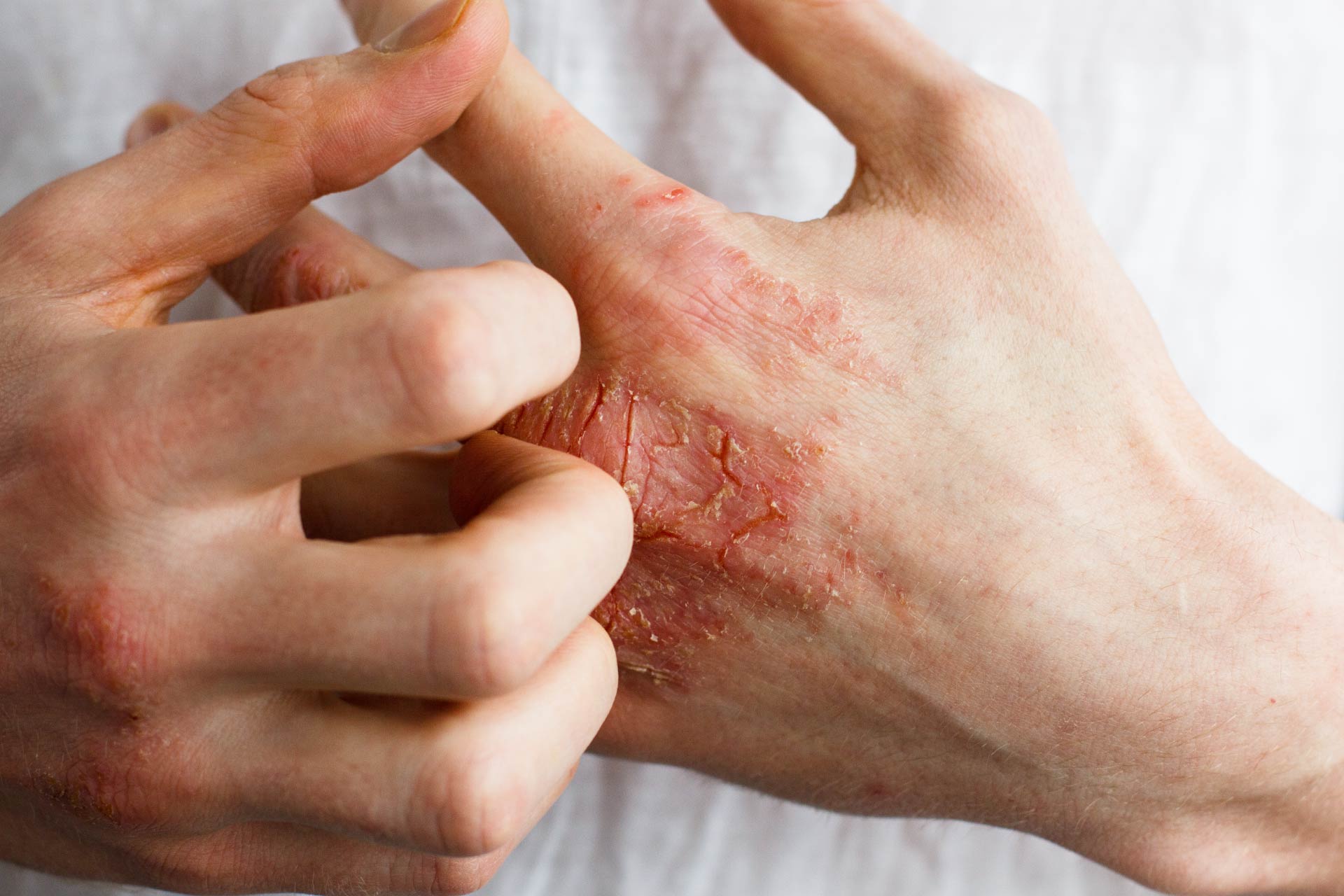What is already known on this topic
Atopic dermatitis, the most common form of eczema, is a long-lasting inflammatory condition that makes skin red and itchy. Nearly 18 million people in the United States are affected by atopic dermatitis, and although treatments and self-care measures can relieve itching, there’s no cure for the condition, which is often worsened by a pathogenic strain of the bacterium Staphylococcus aureus.What this research adds
Researchers have screened more than 8,000 strains of Staphylococci bacteria derived from the skin of people without atopic dermatitis to identify one strain, called Staphylococcus hominis A9, that inhibited the growth of S. aureus. After showing that a cream containing a mixture of Staphylococcus hominis A9 and unscented lotion could alleviate symptoms of atopic dermatitis in mice, the researchers tested it on people to determine its safety. After being treated with the cream, two-thirds of the 54 trial participants with atopic dermatitis reported improvements in their symptoms, including reduced itchiness and inflammation of the skin, and no side effects.Conclusion
The findings show that Staphylococcus hominis A9 could be a safe therapeutic approach for atopic dermatitis.
Our skin is teeming with bacteria — and that’s a good thing. Researchers have now identified a strain of bacteria derived from healthy human skin that can treat atopic dermatitis, the most common form of eczema.
The findings, published in Nature Medicine, show the newly identified bacterial strain could be a safe therapeutic approach for atopic dermatitis. “This was a safety study,” says senior investigator Richard Gallo at the University of California, San Diego. “We found exactly what we hoped to find. The eczema of participants who received the bacterial treatment improved and there were no adverse events,” Gallo says.
Atopic dermatitis is a long-lasting inflammatory disease that makes skin red and itchy. Nearly 18 million people in the United States are affected by atopic dermatitis, and although treatments and self-care measures can relieve itching, there’s no cure for the condition.
Scientists have known that a pathogenic strain of the bacterium https://microbiomepost.com/imbalance-of-staphylococcus-bacteria-could-be-responsible-for-skin-damage-and-inflammation/Staphylococcus aureus can worsen skin conditions including eczema. To find a safe and effective approach to prevent the growth of S. aureus, Gallo and his team screened more than 8,000 strains of Staphylococci derived from the skin of people without atopic dermatitis.
Animal tests
Among the bacterial strains that inhibited the growth of S. aureus, the researchers identified one strain, called Staphylococcus hominis A9, that was also least likely to damage skin or resist antibiotics. The microbe also inhibited the expression of a S. aureus toxin that promotes inflammation.
Then the team tested Staphylococcus hominis A9 as a strategy, known as bacteriotherapy, to treat a mouse model of eczema. The researchers mixed the microbe with unscented lotion and applied the mixture to the mice twice every day. After three days of treatment, the animals showed less inflammation and reduced skin colonization with S. aureus.
Safety trial
Next, the researchers enrolled 54 people with atopic dermatitis in a phase 1 clinical trial. For one week, the team applied on the participants’ forearm skin a cream containing a mixture of Staphylococcus hominis A9 and unscented lotion.
Although the severity of eczema did not differ across participants treated with Staphylococcus hominis A9, the researchers observed a decrease in S. aureus DNA on the skin of trial participants. And while Staphylococcus hominis A9 did not kill all S. aureus strains, it inhibited the expression of the inflammatory S. aureus toxin.
Of the 54 trial participants, two-thirds showed improvements in their symptoms, including reduced itchiness and inflammation of the skin, without reporting adverse events, the researchers found. “These observations demonstrate the safety and potential benefits of bacteriotherapy for atopic dermatitis,” they say.
“This research is a unique approach to targeting the harmful S. aureus on atopic dermatitis skin with beneficial bacteria,” says study co-author Donald Leung. “It’s our hope this will help patients with eczema rid their skin of the harmful bacteria causing the inflammation.” Future work, Leung says, will determine whether the cream can be used for long stretches of time to alleviate the symptoms of eczema and improve people’s quality of life.









